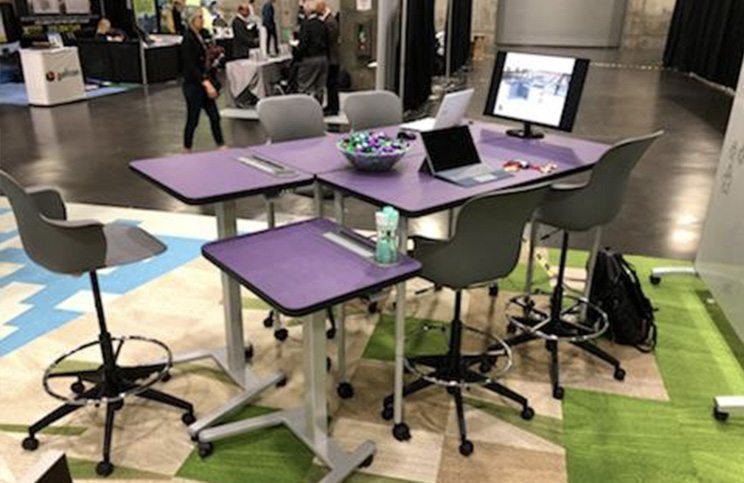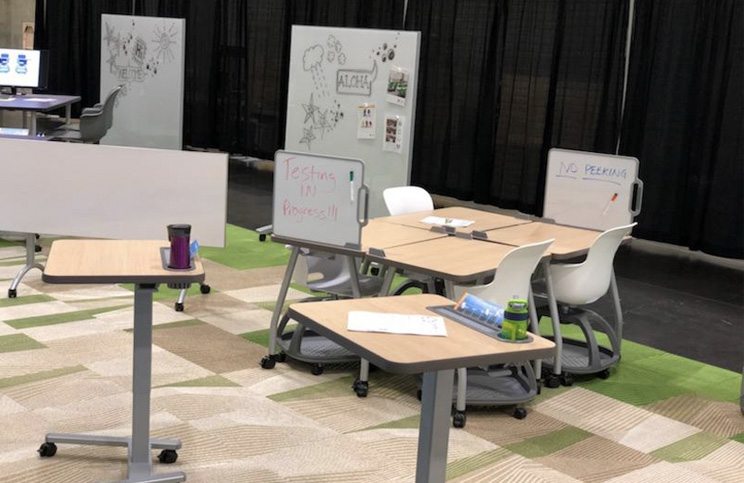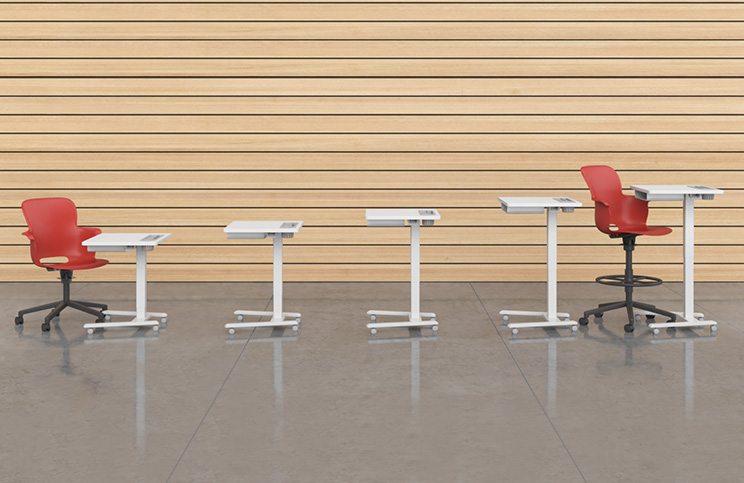Haskell enjoyed being a part of this year’s CASH show which highlighted opportunities and challenges for school districts and their private sector partners presented by the implementation of Proposition 51. At our spot in the NextGen booth, however, the hot topic was sit to stand desks—and not just for students. We had numerous conversations with schools and architecture and design firms about the benefits of sit to stand desks. Some conversations even involved getting rid of the front of the classroom (including the teacher’s desk) and moving to a sit to stand model. We think there are two very good reasons for this interest in sit to stand.

A Healthier Classroom
Numerous studies have shown that long hours of sitting are linked with a higher risk of:
- obesity
- diabetes
- cardiovascular disease
- cancer (especially cancers of the colon or breast)
- premature death
Conversely, according to Prevention Magazine in an article about standing desks in the workplace, “According to Harvard Medical School, standing desks allow you to burn slightly more calories than you would sitting while you work, and they can also reduce the risk of shoulder and back pain. Another perk: They may help blood sugar levels return to normal more quickly after eating (which keeps energy levels up, regulates hormones, and promotes good metabolism) and could potentially counteract all the detriments of lengthy sitting listed above (more research is needed to say anything definitively). And, one study by researchers at Texas A&M University’s Health Science Center School of Public Health found that standing desks improve productivity. There’s also a good possibility you’ll actually move more in general throughout the day, beyond the confines of a cubicle.”
Much like the corporate world, students and teachers are also negatively impacted by our increasingly sedentary lifestyles. Juststand.org shares some alarming statistics and a solution. “Childhood obesity rates have tripled over the last three decades, and with two out of every three kids deemed inactive, the statistic is at risk of growing. Active kids stay active, so introducing low-level activity in the classroom, such as sit-stand desks, can help to break this pattern.”

A More Focused Classroom
While there is a genuine and valid concern among educators that movement in the classroom can create chaos (which we covered recently in the blog post entitled Will Flexible Seating Create Chaos in Your Classroom) the studies actually show that incorporating movement in the right way can actually create the exact opposite effect—a more focused classroom.
The University of Scranton shares “Teachers who are using standing desks in their classrooms are finding that they’re enjoying a calmer, more focused environment. Stamina for learning is up and classroom management issues are down.” They go on to explain “The brain operates at its peak when the body does. Sitting affects blood sugar, which can lead to a stupor state. People simply think better while standing.”
Furthermore, standing helps students stay engaged. The Conversation cites a study with surprising numbers. “In a study of nearly 300 children in second through fourth grade over the course of a school year, Benden and his team found that kids in classrooms with standing desks exhibited 12 percent greater “on task” engagement when compared to kids in classrooms with the traditional seated desks.”
In fact, studies show that movement and standing can:
- provide greater “on task” engagement
- help all types of learners, including students with ADHD
- create a calmer, more focused environment
- create a more collaborative and engaged classroom

Choosing the Right Sit to Stand Desk
With educators facing more budget constraints, it is important to find quality, durable furniture. We also know that kids don’t always treat furniture delicately, so it needs to be built to last. Also, because sit to stand desks require constant adjustment, desks that won’t hold themselves in a complete locked position can wear after just a few years. Ask your vendors about:
- The warranty
- Bounce and slippage
- The materials used (high-pressure laminate tops are more durable than melamine, paper or vinyl)
- Weight capacity
- Stability
- Ease of use
If you’d like a demonstration of the Haskell sit to stand desk (which we think has no rival) or would like to discuss a lunch and learn on Next-Gen Learning Environments at your school or firm, please contact me (Cristel Hutchinson) at chutchinson@haskelloffice.com or 360-529-7074.
Back to Insights











